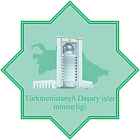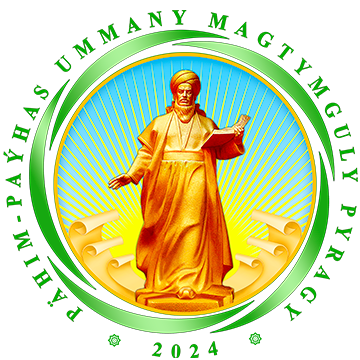Magtymguly Fragi»




The Turkmen national rite of singing and dancing, Kushtdepdi, has been inscribed on the UNESCO Representative List of the Intangible Cultural Heritage of the Humanity. This has been communicated at the session of the Government of Turkmenistan by President Gurbanguly Berdimuhamedov.
The decision was adopted unanimously at the 12th session of the Intergovernmental Committee for the Safeguarding of the Intangible Cultural Heritage that took place on 7 December 2017 in Jeju (Republic of Korea). According to the head of state, this fact confirms the recognition of enormous importance of the spiritual culture of the Turkmen people, the integral part of the universal cultural heritage. Kushtdepdi is a colorful example of folk art that reflects the symbolic relation between historical and cultural traditions and spiritual experience of the nation, and represents the vivid example of harmonious blend of traditions of the past and creative energy of our time, said the head of state.
The President expressed his congratulations to those present at the session and all people of Turkmenistan with this remarkable event, and stressed the importance of intensifying works on promoting the national cultural heritage.
* * *
The decision of the United Nations Educational, Scientific and Cultural Organization (UNESCO)
12th session,
City of Jeju, Republic of Korea,
December, 4-9, 2017
UNESCO Intergovernmental Committee for the Safeguarding of the Intangible Cultural Heritage:
1. Takes note that Turkmenistan has nominated Kushtdepdi rite of singing and dancing (No. 01259) for inscription on the Representative List of the Intangible Cultural Heritage of Humanity:
The Kushtdepdi rite of singing and dancing is a performing art involving creative poeticizing focused on good feelings and wishes. It involves singing with vocal improvisation and dancing with movements of the hands, gestures and footsteps in accordance with the tune of the song. The rite serves as a tool for conveying good wishes and is an inseparable part of ceremonies and national celebrations. The bearers and practitioners are the master singers and dancers experienced in the art and able to pass on the vocal techniques and the skills of the dance. The element serves as a bridge between generations based on shared spiritual and cultural values. The bearers and practitioners are actively involved in safeguarding the element, and community members ensure the viability of the element through performances at ceremonies and social gatherings that foster social cohesion and mutual understanding. Community members also partake in compiling introductory teaching resources on the practice and regular field expeditions are organized to gather information about it. Knowledge and skills relating to the practice are traditionally transmitted from master singers to amateurs through informal oral learning and practical training, but specialized music schools and cultural centres also help amateurs develop their skills through formal training.
2. Decides that, from the information included in the file, the nomination satisfies the following criteria for inscription on the Representative List of the Intangible Cultural Heritage of Humanity:
-Kushtdepdi rite of singing and dancing forms part of family ceremonies (such as births and weddings) and national celebrations. The rite serves to promote happiness, fertility and welfare for the communities, and promotes peace and solidarity, social cohesion and unity among community members. Bearers can include anyone irrespective of age, gender, social status and vocation, and comprise students, farmers, fishermen, workers, researchers, scholars and artisans. Transmitting a code of ethics is also an important aspect of the practice.
- The inscription of the element would contribute to a better understanding of the performing arts as a tool for dialogue between generations and for social cohesion both in the country and abroad. Inscription would promote further scientific studies and academic interest in the element and other similar practices. As a platform for exchange and cultural cooperation that could strenghten ties between people of different age categories and foster tolerance and respect between genders, the element contributes to intercultural and intergenerational communication.
- The viability of the element has been ensured by coordinated efforts by the communities and institutions concerned, in both the past and present. Such measures include: publishing activities; identification, documentation, educational, awareness-raising and capacity-building measures at the national level and performances during wedding ceremonies, social events and national celebrations. Courses on the element have also been included in secondary schools and the higher education system since 2009 and field surveys are frequently organized to gather data on the current status of the element. All the expenses related to the implementation of the planned safeguarding measures are financed through the State Budget of Turkmenistan. The local government has created a legal basis to support the safeguarding of intangible cutlural heritage.
- The idea for the nomination came from community members involved in the international cultural festival in 2014. The preparation of the nomination file involved the wide, active participation of the communities concerned. They were also intensely involved in collecting documentation during the nomination process. The State Party has specified that practitioners and community members were actively involved in the registration of living bearers and existing folklore ensembles, gathering the required information, including photographs, audio and video recordings, identifying modes of practice and transmission and determining the cultural meanings and social functions related to the element.
- The element was included in the National Inventory of the Intangible Cultural Heritage of Turkmenistan in 2013. The Department of the Intangible Cultural Heritage at the Ministry of Culture of Turkmenistan is the body responsible for the administration and maintenance of the National Inventory. The Inventory was drawn up with the active participation of bearers, practitioners, community members and members of folklore groups, in close cooperation with participants of organized folklore field expeditions consisting of scholars and specialists from the Ministries of Culture and Education and the academic sector. The National Inventory is updated annually.
3. Inscribes Kushtdepdi rite of singing and dancing on the Representative List of the Intangible Cultural Heritage of Humanity;
4. Reminds the State Party that measures aiming at safeguarding the element should not attempt to 'freeze' the element and underlines the inherently living and evolving nature of intangible cultural heritage, which is constantly recreated by communities.

